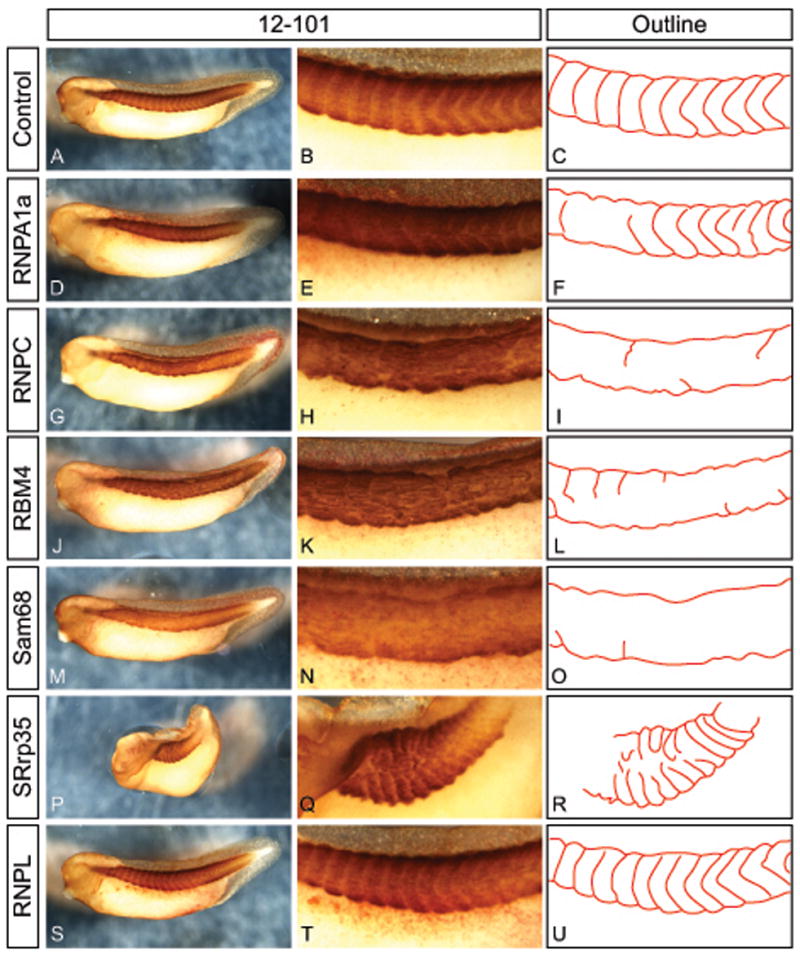Figure 3.

Effect of overexpression of RNA binding proteins on axial muscle structure. Embryos were injected with 50 pg mRNA and betal-gal lineage tracer into one cell at the 2-cell stage and cultured to stage 37 followed by immunostaining with 12/101 to mark skeletal muscle. Uninjected controls in whole view (A), magnified view of axial muscle (B), and schematic outline of the segmentation pattern (C). Embryos injected with mRNA for RNPA1a (D–F), RNPC1/C2 (G–I), or Rbm4 (J–L) have normal overall amount of muscle (D,G,J), but show irregular segmentation (E,F,H,I,K,L). Injection of Sam68 mRNA stains weaker for 12/101 (M) and show almost completely absent segmentation (N,O). Misexpression of SRrp35 caused severe lateral kinking of the embryo (P) and highly irregular segmentation (Q,R). Injection of RNPL mRNA as a control did not affect overall muscle amount (S) or muscle segmentation (T,U). Embryos were injected with 50 pg mRNA in one cell at the 2-cell stage. Coinjected beta-galactosidase mRNA developed with red-gal was used as a lineage tracer.
